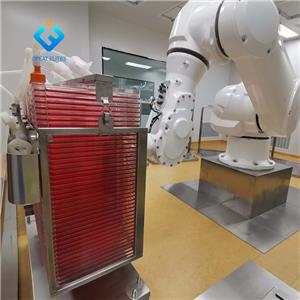Virus
Virus is a kind of submicroscopic particle that can be replicated by host cell system without complete cell structure. The virus does not have a cellular structure and cannot grow and replicate independently, but it can infect all living organisms with cells and has the characteristics of heredity and replication.
Viruses are mainly composed of nucleic acids and protein shells. Some viruses have membranes and spikes, such as influenza viruses. Like other biological genes, viral genes can also mutate and recombine, so they can evolve.
People have different views on whether viruses are a life form or just an organic structure that can interact with organisms. Viruses are highly parasitic. They completely depend on the energy and metabolic system of host cells to obtain the materials and energy needed for life activities. They leave the host cells. They are just a large chemical molecule. They can be made into protein crystals after stopping their activities. They are an inanimate body. When encountering host cells, they will show typical characteristics of life through adsorption, entry, replication, assembly, and release of their offspring viruses, So the virus is between living things and non living things, an "organism on the edge of life".
Prevention and treatment
Because viruses use host cells to replicate and reside in them, it is difficult to kill viruses without destroying cells. Now the most active way to deal with viral diseases is vaccination to prevent viral infection or use antiviral drugs to reduce the activity of the virus to achieve the purpose of treatment.
vaccines
Vaccination is a cheap and effective method to prevent virus infection. Long before the virus was discovered, vaccines had been used for people to prevent virus infection. With the popularization of vaccination, the incidence rate and mortality of some diseases related to viral infection (such as poliomyelitis, measles, mumps and rubella) have dropped significantly, and smallpox, once a deadly disease, has disappeared.
At present, all kinds of vaccines can prevent more than 30 kinds of virus infection to human body, and more vaccines are used to prevent virus infection to animals.
The components of the vaccine can be viruses with reduced activity or dead, or viral proteins (antigens). Live vaccines contain disease causing viruses with weakened activity, which are called "attenuated" viruses. Although the activity is weakened, the live vaccine may be dangerous to those with weak immunity or immunodeficiency, and the injection of live vaccine to them may lead to disease instead. Biotechnology and genetic engineering are used to modify viral vaccines. The modified vaccines (i.e. subunit vaccines) only contain the capsid proteins of viruses, such as hepatitis B vaccines. Because it does not contain viral nucleic acid, the subunit vaccine is safe for immunocompromised patients. There are also some exceptions to the safety of live vaccines. For example, yellow fever virus vaccine, although it is a attenuated virus strain (called 17D), may be the safest and most effective of all vaccines.




